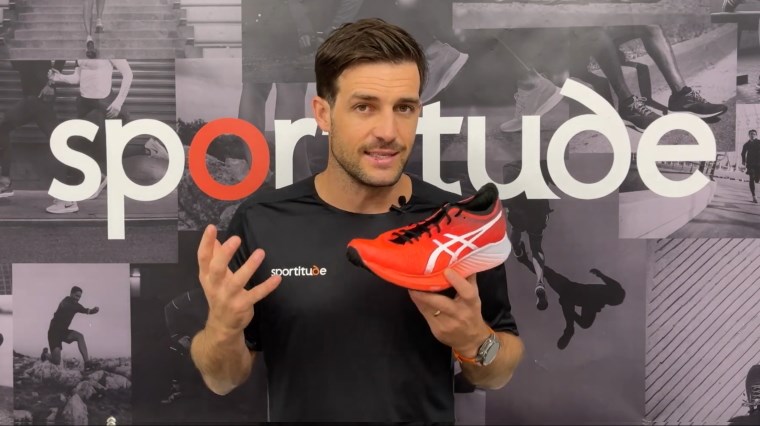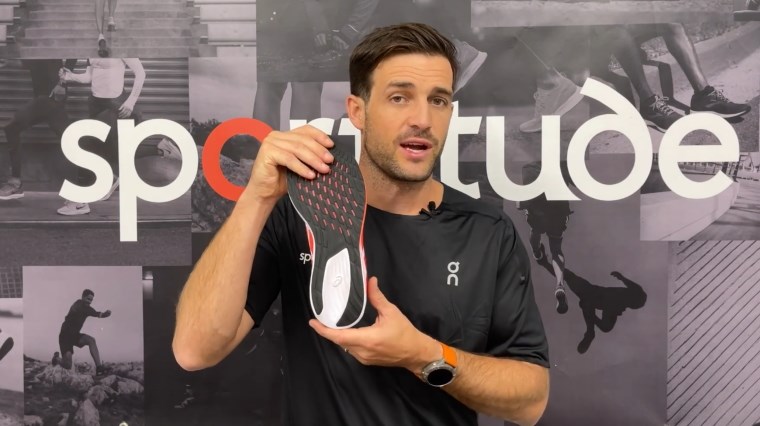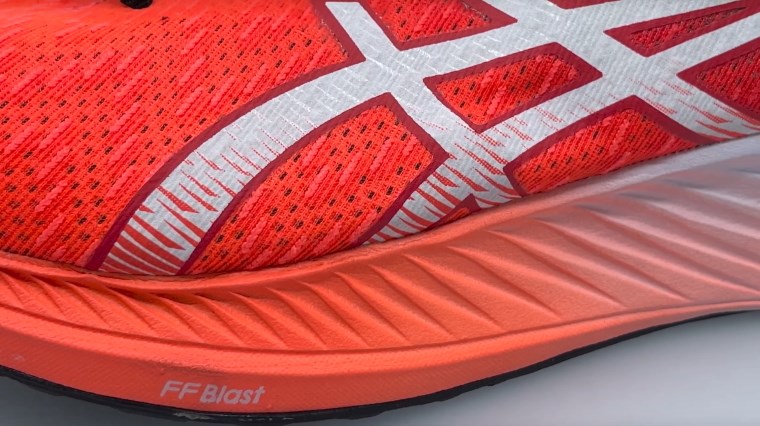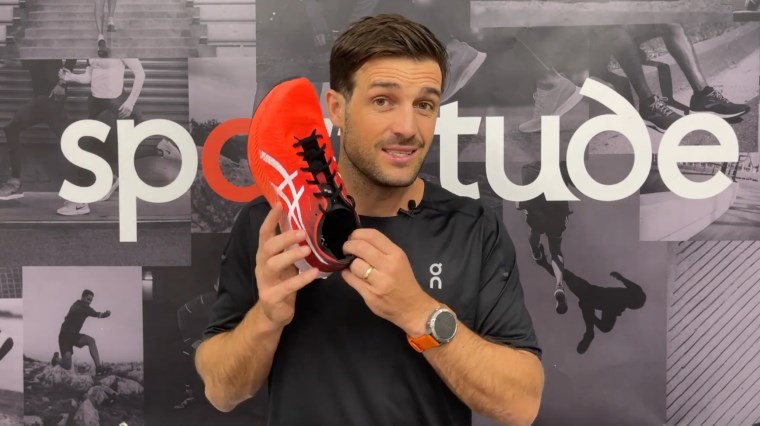Asics Magic Speed Running Shoe Review

Josh reviews the Asics Magic Speed men’s running shoes, an adaptable ride to rise to the challenge of your tempo training and that partners smoothly with a strong running form.
It’s also one to consider for race day, particularly for runners that prefer higher flexibility and a more affordable price point than its close relative, the fast and snappy Asics MetaSky Speed that’s made purely for the racing scene.
Since Asics have prioritised a lightweight design over support, the Magic Speed racing shoe is best suited for neutral foot types. With plenty of surface area underneath the foot and hard-wearing rubber in critical zones, the outsole caters to heel, midfoot and forefoot strikers.
The responsive FlyeFoam Blast midsole adds a snappy sensation to your transitions. The three-quarter carbon plate runs from midfoot to forefoot, working harmoniously with the GuideSole rocker technology to improve your gait efficiency, preserving your energy and creating a propulsive feel.
The engineered mesh upper keeps bulk and weight to a minimum with a thin stitched-in tongue, just-right padding and extra eyelet for a locked-in fit to stay secure on the platform during your faster runs.
Check out the review with full transcript below.
Hey guys, Josh here from Sportitude Running and today it's shoe review time and we're going to be talking all things Asics Magic Speed. This shoe has just landed in our warehouse mid part of April 2021 and Asics have brought this shoe into their range to complement that lightweight daily trainer/racing option for you the running community.
In today's review we're going to be talking all things outsole, profile the midsole, talk about the upper and give you some information about who could be considering this shoe. Who knows, it could be a shoe that you could be throwing into your shoe rotation. Without further ado let's get stuck in.
Runner Profile

Let's profile the foot type that could be considering the Magic Speed. It's a lightweight trainer so we can take in consideration that brands take out components to sacrifice a little bit of support to get that lightweight fit and feel.
If you happen to be an overpronator and you're looking for some arch support, I would probably say push this shoe aside and it won't make its way into your rotation. However, if you're a neutral runner or someone that can tolerate less support inside a lightweight shoe for your tempo runs, sessions as well as race day then we could be considering this shoe.
Outsole

Let's break down the engineering components of this shoe. First things first, let's look at the outsole. You have AHARPLUS the whole way through bar a little section at the back of the heel. You have full ground contact, plenty of surface area and landing crash pad on offer for a heel, midfoot and forefoot runner.
They have covered that lateral column of the outsole quite well and they will cater for just about any footstrike type on the market.
Midsole

Let’s get talking all things midsole. Asics have on offer underneath the foot the FlyteFoam Blast midsole. It's a light and responsive foam and it's encapsulating a three-quarter carbon plate.
The carbon plate runs from midfoot to forefoot. The three-quarter carbon plate is to aid in the GuideSole technology. There's an element of a mild rocker inside this shoe. For that runner that comes down and lands on heel or midfoot, as you transition from midfoot to forefoot, you'll get that GuideSole technology for a smooth and effortless toe-off. That's what the carbon plate is there to do.
It's obviously complementing that FlyteFoam Blast cushioning system which has plenty of dampening but that aid in responsiveness is where the carbon plate will work in conjunction with the midsole.
It is relatively light and it's on a generous stack, we're talking 34mm in the heel and 29mm in the forefoot for a 5mm offset, and that's both in the men's and women's model. It offers plenty of shoe underneath the foot so you're going to notice a bit of cushioning inside this shoe.
However, it isn't a supportive shoe as we touched on in the intro. On the medial side there's no additional dynamic support system or arch support that's gone into this shoe. It is neutral with the same density on the medial and lateral side.
There's no change in the geometry on this midsole, so it's really trying to get the carbon plate to engage your foot on top of that flat platform to encourage a smoother, snappier toe-off inside this shoe.
Upper

It's a relatively lightweight upper. It's an engineered mesh so it's a really breathable system. There’s a very thin tongue so there's not a lot of padding inside this shoe. They have tried to reduce weight in areas you can sacrifice for a lightweight tempo/racing shoe.
The tongue is thin and is stitched down the bottom of the shoe, so it won't drop down to the medial or the lateral side. It will stay nice and fixed which is what I found with my couple of runs inside this shoe.
I like what Asics have done from a heel counter perspective. It's like a suede internal collar with a little bit of padding around the back of the Achilles.
It is a nice comfortable fit and they’ve thrown in the additional eyelet at the end. If you're the runner that likes to lock down your foot with a heel lock lace or even just like to come back to that last eyelet you have the ability to do that.
The sockliner is glued into this shoe so that stays fixed. If you happen to be a runner that may have a preferred sockliner at home or have removed sockliners previously to put in an orthotic, note that it is glued in and it's glued in for a specific reason.
Widths
While we're talking all things upper, it is in standard widths only which is no surprise. Your niche running shoes being your lightweight and your race day shoes are only offered in your standard widths, being a D in the men's and a B in the women’s model.
The Wrap Up

That's my take on the Asics Magic Speed. To break it down for you, it is a lightweight shoe. It comes in around 230 grams in the men's size 9 and around 185 grams in a women’s size 7. It's not the lightest shoe in the market but it's certainly coming down towards that really lightweight category.
Asics have introduced this into their range as a complimentary shoe for a runner who's looking for a lightweight tempo and session shoe. Some athletes will race in this shoe purely and simply because it is light and marginally more flexible than the most recent racing flat that Asics have just launched, being the Asics MetaSpeed Sky.
The MetaSpeed Sky came to the market just before the Magic Speed and features a full-length carbon plate and very rigid ride underneath the foot. The MetaSpeed Sky is all things race day whereas the Magic Speed can be used as a race day shoe, but I would see it to be a really good shoe for someone who's relatively neutral with a stable and strong mechanical movement pattern through their running form. It’s for the runner that’s looking for a light and snappy shoe for those tempo and session runs.
If you have any questions on the Magic Speed, please contact our Sportitude shoe experts. If you have any questions, queries or theories on all things carbon plates or running shoes we'd love to hear from you.
Please subscribe to the Sportitude Youtube channel if you haven’t already done so to stay notified and we'll keep pumping out these shoe reviews for you all through 2021 and beyond.
Stay safe, be kind to each other and we’ll see you on the road. Take care.
FEATURES
- Support: Neutral, Lightweight
- Upper: Mesh
- Midsole: Asics FlyteFoam Blast
- Heel Height: 34mm
- Forefoot Height: 29mm
- Offset / Drop: 5mm
Men
- Weight: 230g / 8.1oz (US 9)
- Width: D (standard)
Women
- Weight: 184g / 6.5oz (US 7)
- Width: B (standard)
